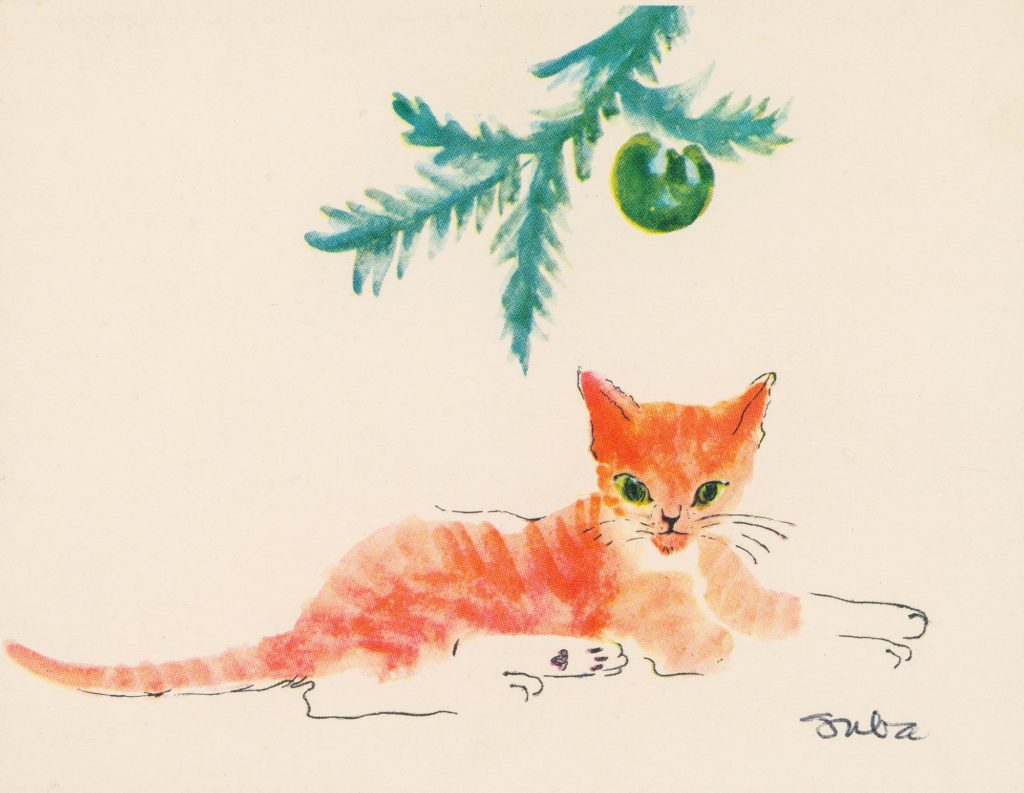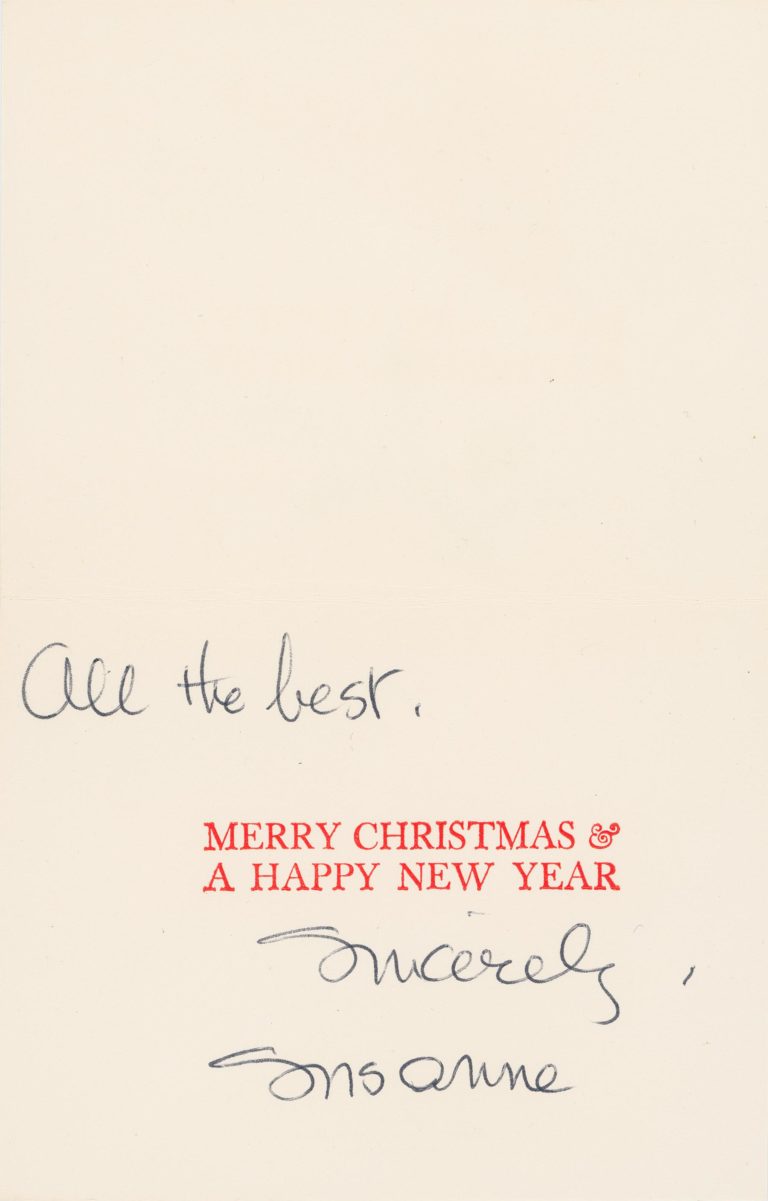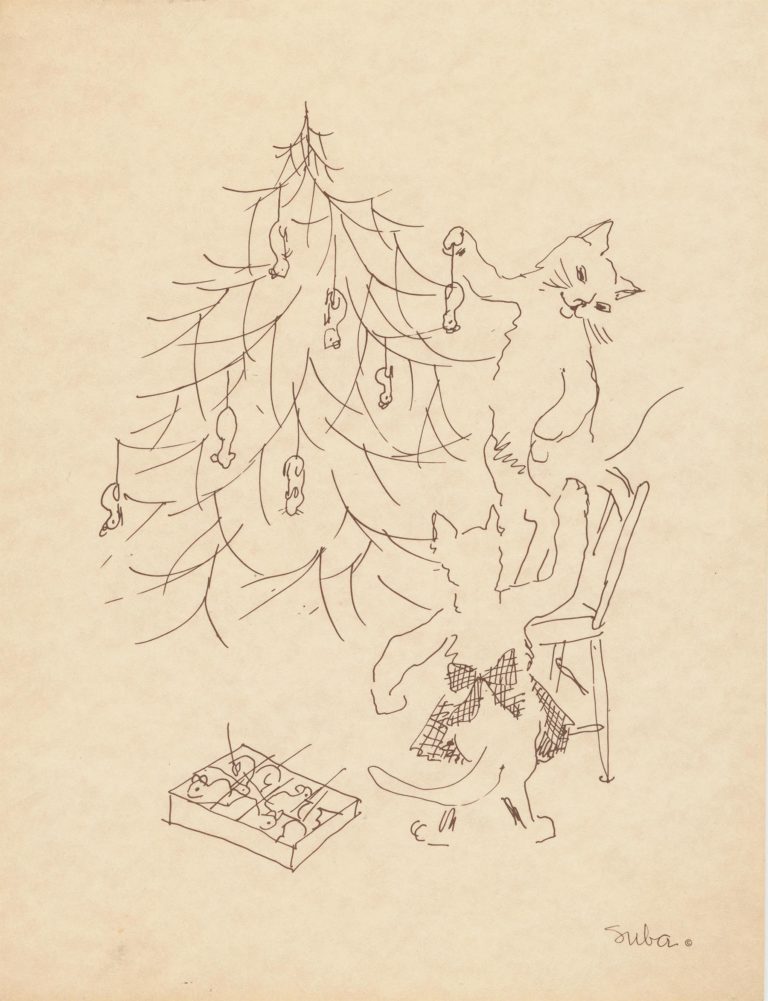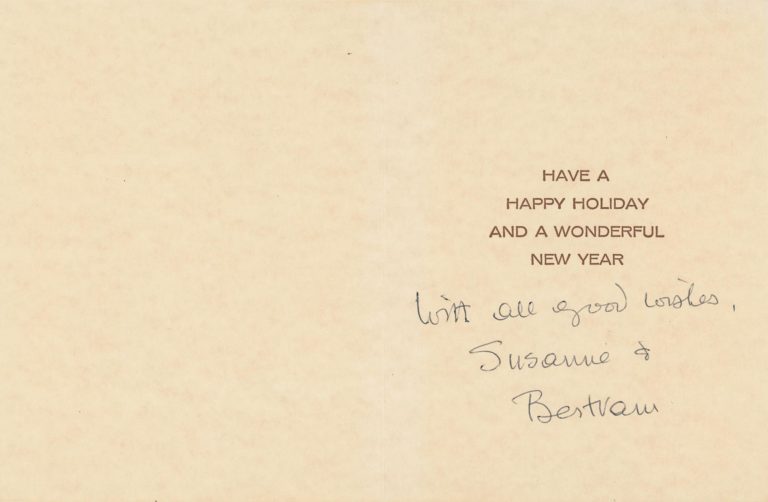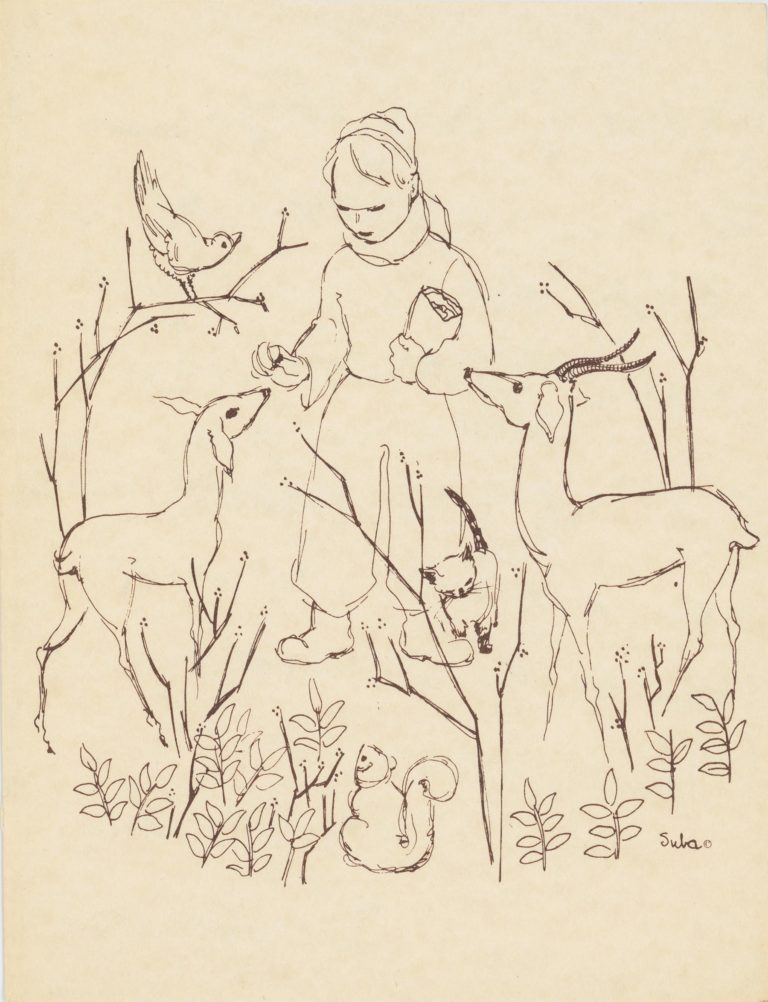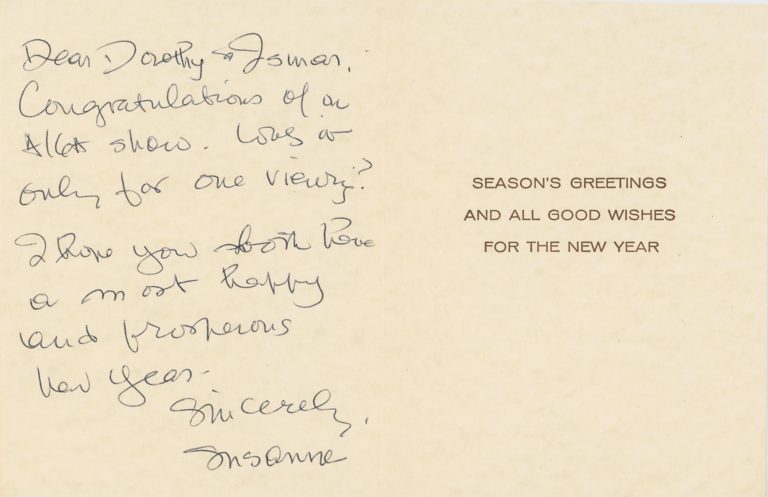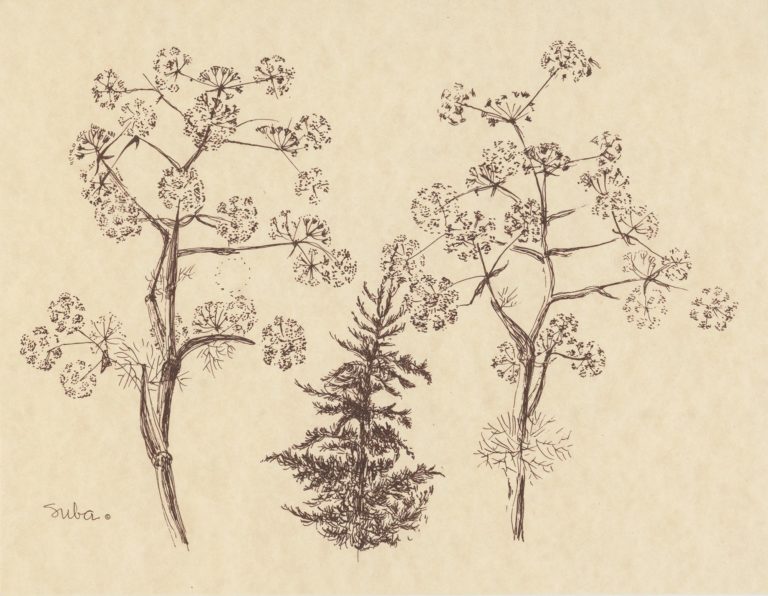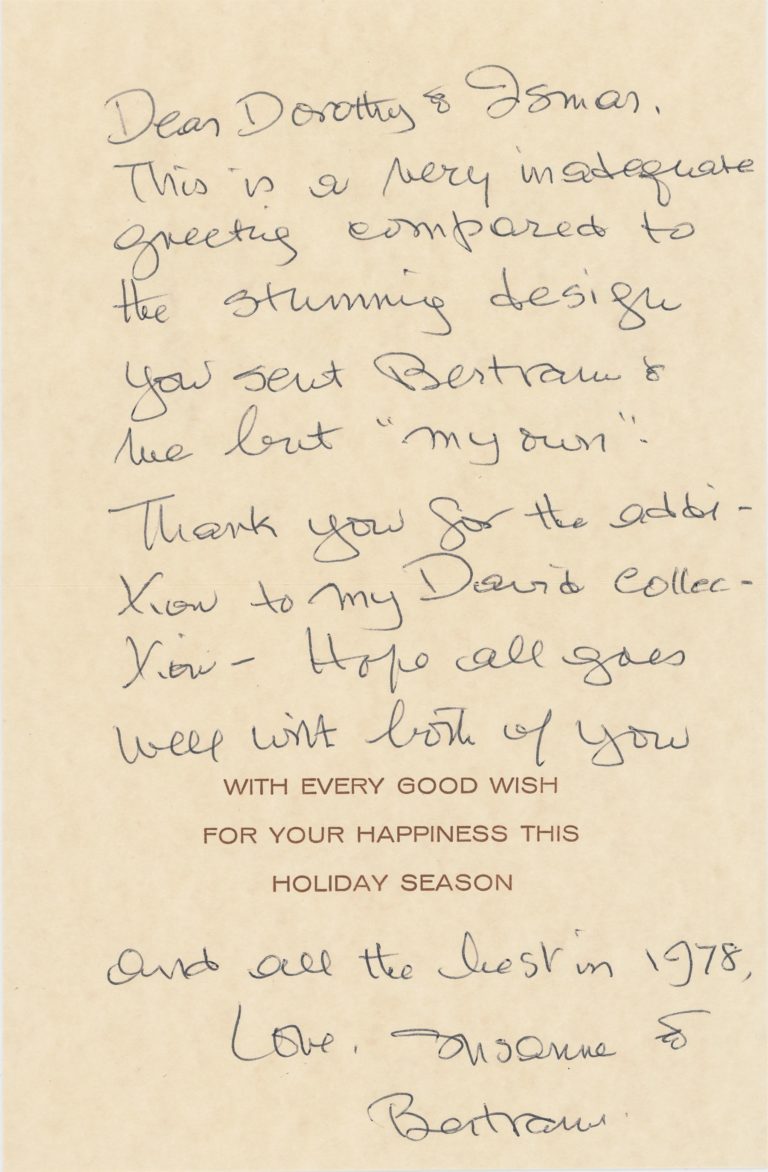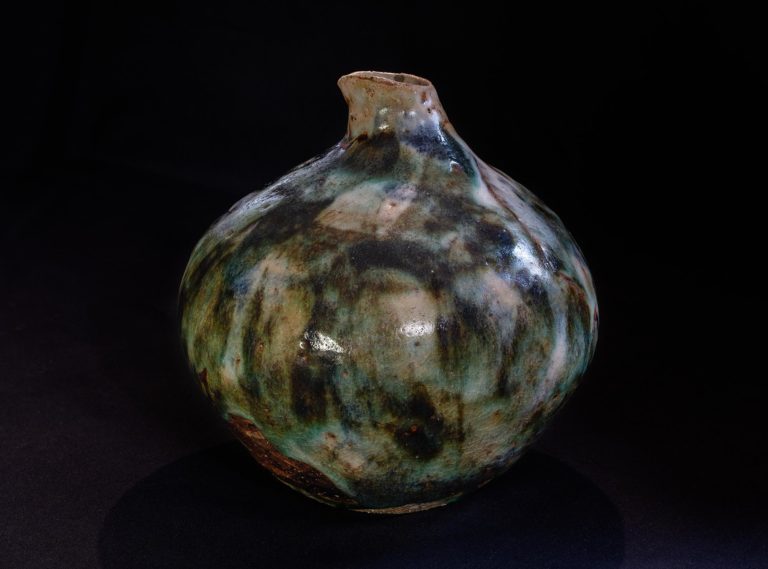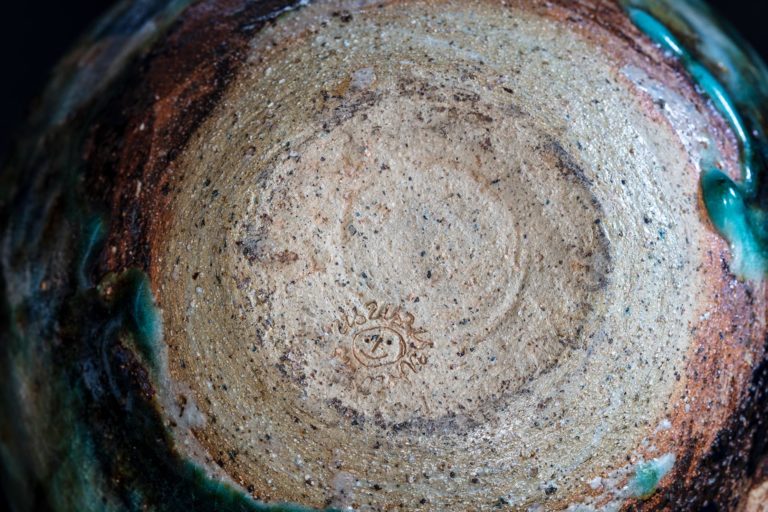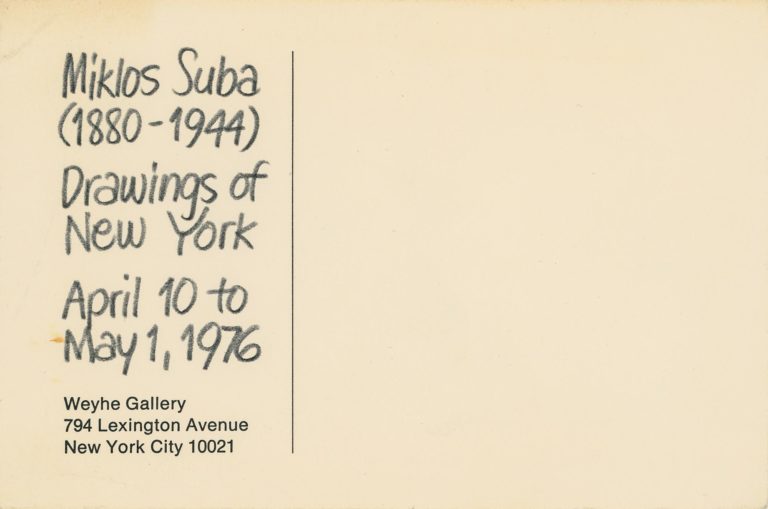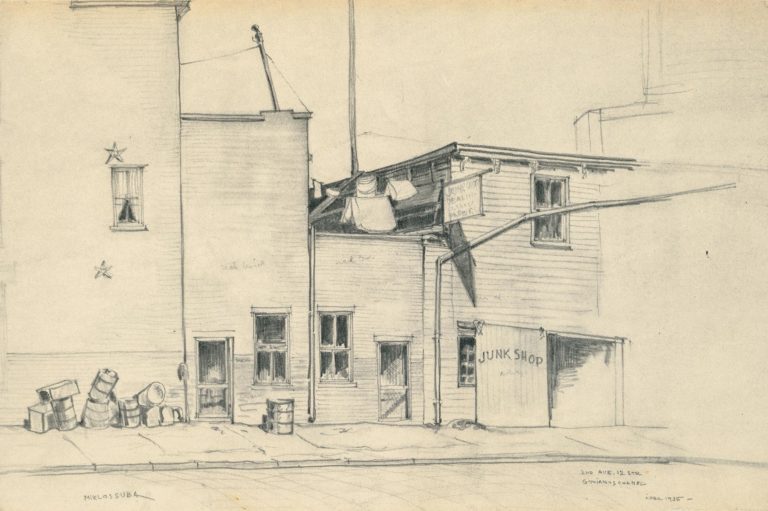Susanne Suba, 1913–2012, watercolorist and illustrator.
At the age of three, Susanne Suba begged for painting lessons from the head draughtsman in her father’s architectural studio. Rebuffed, she “turned to the medium of pencil on penny post-cards, recording our life in Budapest…”1Suba, Susanne, PM [An Intimate Journal For Art Directors, Production Managers, and their Associates]. New York: The Composing Room/P.M. Publishing Co., Volume 4, No. 10: December-January 1938-1939. In her youthful autobiography,2A collection of Suba’s childhood work is preserved in the Winterthur Library, Winterthur Museum, Delaware. she recorded her life from birth until her arrival in New York at the age of six with her American-born mother, pianist May Edwards Suba. Her father, Miklos (1880–1944), who joined them in Brooklyn a few years later, gave up architecture and became a well-known Precisionist painter.
After studying at Pratt (and decorating the walls of a corset shop, which she didn’t include in her professional portfolio),3 Suba, Susanne, PM [An Intimate Journal For Art Directors, Production Managers, and their Associates]. New York: The Composing Room/P.M. Publishing Co., Volume 4, No. 10: December-January 1938-1939. Susanne Suba began her career in earnest, with four illustrations for The Colophon. Her first assignment as a book illustrator, Life Without Principle by Henry David Thoreau, landed in AIGA’s Fifty Best Books of the Year in 1937. Many, many books followed, some by her then husband Russell McCracken. She designed book jackets, as well, and did numerous spot drawings, one cartoon and five covers for the New Yorker between 1939 and 1963.4 Maslin, Michael, The New Yorker Cartoonists N-Z The Museum of Modern Art, the Art Institute of Chicago and the Brooklyn Museum have shown her work.
The Composing Room’s PM-AD Gallery exhibited her drawings in 1940, four years after Hortense Mendel started there. Suba, with her husband, playwright (most famously of Dark Victory) Bertram Bloch, exchanged seasonal greetings cards with Ismar and Dorothy David. Somewhere along the line, Suba tried her hand at ceramics.


























